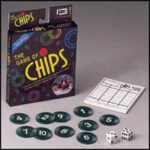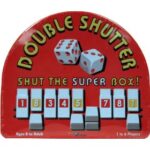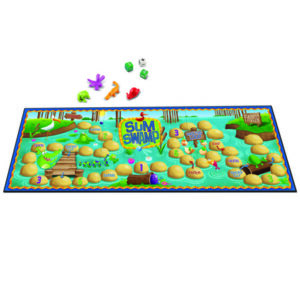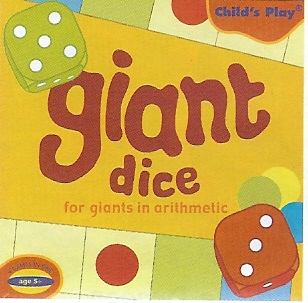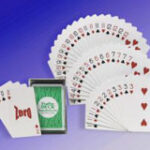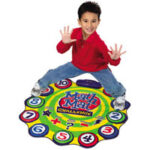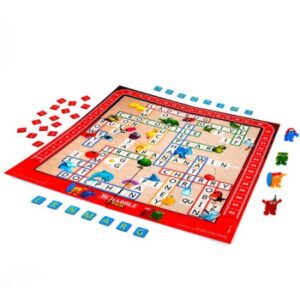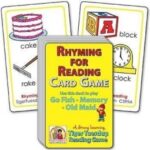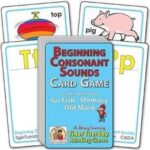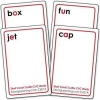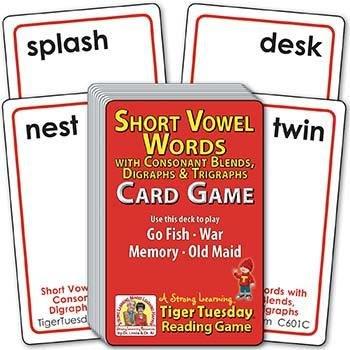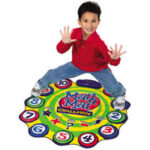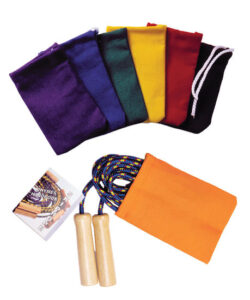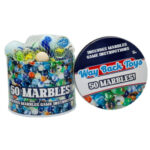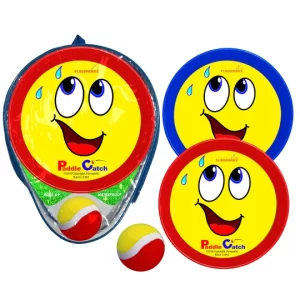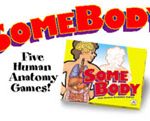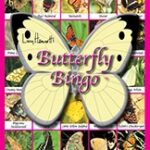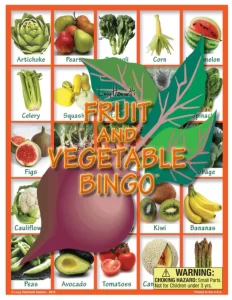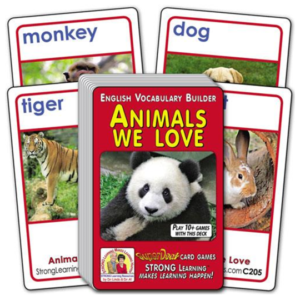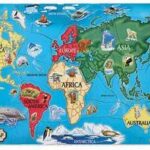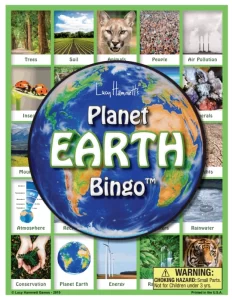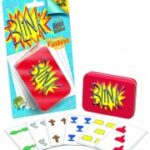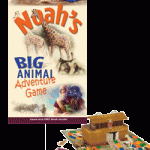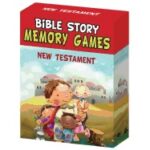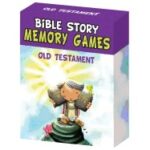FIRST GRADE
At this age you can accomplish a great deal of learning as you go about your daily tasks.
How to Use the LEARNING STYLES Hints on the Charts
You will notice that the game charts have a column labeled LEARNING STYLES. If you have read Discover Your Child’s Learning Style, you will understand what the notes mean. If not, here is a brief key:
Modalities:
Print means that most content is in print.
Picture means there are a lot of pictures or other graphics.
Visual means that both print and pictures are used in the game.
Verbal means there is some to quite a bit of talking involved.
Listening means that listening is involved.
Auditory means that both Verbal and Listening skills are used in the game.
Hands-on means that there is significant hand movement of cards, pieces, etc.
Whole Body means that the whole body is moving.
Writing means that writing is involved.
Dispositions:
Move means that there is significant physical activity. These games are great for the very active child who hates to sit still.
Produce means that there is a clear (to the student) and quantifiable learning objective. These children like to have a game labeled “educational” whereas that adjective is the kiss of death to most of the other dispositions.
Invent or Discovery means that there is discovery and/or experimentation involved.
Interact means that there is significant social interaction. This learning style enjoys most games so it is only listed it when the group interaction is above average.
Create means that the game requires significant thought and/or creativity.
There is another vital element of learning that is important in regard to physical movement or what schools like to call Physical Education. This is explained in depth in Smart Moves by Carla Hannaford. Therefore, we have included the notations Vestibular and Proprioceptive to help you pick out P.E. games and activities that give your child reinforcement in these sensory areas.
Vestibular refers to awareness of body balance and movement.
Proprioceptive refers to the relative position of different parts of the body and the strength of effort used in movement.
Most games combine multiple elements, so we listed only the salient ones. Likewise, any one child’s learning style is far more complex than these simple definitions and each child’s personality includes a combination of several modalities and dispositions. Watch for the elements in games that your child likes and look for those or similar elements in other games
MATHEMATICS
Counting by 2’s and 5’s is also the beginning of learning multiplication. Show your child that when you reach the number 4 on the dial you are 20 minutes past the hour, 5 on the dial means 25 minutes past the hour and so forth. Later when you are teaching multiplication, he will already understand how the clock uses multiplication.
Get a ruler, yardstick, thermometer, kitchen scale, measuring cuts, etc. and let your child use them. Let him help when you are cooking. Help him build and measure things. The more practical, real things he does with these tools the better and faster he will understand them and the mathematics that corresponds to each tool or device. Without worksheets, he will understand linear measurement, basic geometry, liquid measurements, fractions, addition and many other wonderful topics. You will find that workbooks become largely unnecessary in your homeschool or classroom. Through the use of these delightful activities your child will “want” to learn these subjects, not “have” to.
Remember that before age 12 abstract concepts may be quite difficult and math with only numbers is very abstract. The more hands-on math related activities you do at this age, the better will be your child’s understanding of math concepts. Fractions are easy when done with real objects like cut up fruit, etc. Children need lots of experience with things they can touch, feel and take apart before you show them the written forms. Cooking is a wonderful way to learn about fractions as well as a valuable skill to learn.
You may want to investigate the Life of Fred math series. It is a highly creative math curriculum, which teaches using a very gentle and engaging format. It is very popular and fits well with the Game Curriculum because it teaches conceptually and explains math in a very concrete way using a story format.
LANGUAGE ARTS
If your child likes to color, cut and paste, the Fun With Phonograms is perfect. Developed by Cindy Franklin, a teacher who uses the Spalding Method (Writing Road to Reading, Spell to Write & Read, Riggs Institute, All About Reading), the two sets (Set A and Set B&C) will teach the 70 English phonograms with hands-on activities. There are also audio CDs with songs that teach each phonogram. These are available at www.lulu.com. Search by “Cindy Franklin” and scroll through her products.
If you want board games that teach the same 70 phonograms, The Phonogram Fun Packet will do the trick. It includes multiple games, a double-sided game board and everything you need to teach a child to read without using a single workbook. This set can be used for many years as your child grows by adding a few inexpensive components to teach other skills and concepts. It is available at  www.excellenceineducation.com.
www.excellenceineducation.com.
Besides the games and activities listed, you can use letter tiles, magnetic or otherwise, to make and play with words. Our catalog has a number of sets to suit your taste. One of the best ways for your children to develop good language skills is for you to read to them as much as possible. As with the hyper-active kindergartener, manage your reading times to fit the time of day when he or she is best able to listen. Children, especially kinesthetic ones, can manage quite well doing more than one thing at a time. You can read while he is playing with blocks or she with dolls as long as they are quiet enough to hear you.
PHYSICAL EDUCATION
Remember, your child is developing muscle coordination at this age and needs lots of practice using all his or her muscles, large and small.
 small. Children instinctively know what they need to learn physically. If they need to move, that is what their bodies are demanding. Provide plenty of outlets for this. Make sitting times short with lots of activity in between. Provide clay, paint, crayons, plain paper, building toys, gardening tools, building tools, balls, jacks, marbles, and whatever else they need. These things help develop little muscles and hand-eye coordination. Please read the Kindergarten section on Physical Education for some very important developmental information that still pertains to this age
small. Children instinctively know what they need to learn physically. If they need to move, that is what their bodies are demanding. Provide plenty of outlets for this. Make sitting times short with lots of activity in between. Provide clay, paint, crayons, plain paper, building toys, gardening tools, building tools, balls, jacks, marbles, and whatever else they need. These things help develop little muscles and hand-eye coordination. Please read the Kindergarten section on Physical Education for some very important developmental information that still pertains to this age SCIENCE
Science is all around us.
One of the easiest ways to teach science is talk about it as you go through your daily life.
The garden is the best outdoor lab your children will need at this time in their lives. Get simple science books like Usborne Science Activities (vol. 1,2 &3) and The Icky Bug Alphabet Book by Jerry Pallotta and Ralph Masiello serves double duty: science and beginning phonics. Look also for colorful books that explain like the Magic School bus series.
Your children are still in the wonderful stage when they are curious about everything and are full of questions. Do your best to have the energy and patience to answer all their questions. If you get stumped, there is always that old encyclopedia or Wikipedia on line. These and other easy sources will provide most of the answers you need to satisfy your children’s curiosity. Take lots of walks and be sure to discuss with your children what you see. Go to the park, zoo, beach, hills, mountains, or any other wild places that are available to you. Be sure to see the same spot during different seasons and explain to your children the differences that the seasons bring. You can find some interesting travel guides for your own community at major bookstores. Most large metropolitan newspapers have great weekend trip ideas that might be of interest to you. Just by visiting the different locations your children will learn volumes. A day (or an hour) in nature will teach your children much more than a book will in that time frame. I realize that since that kind of learning is not quantifiable, it is often discounted. This is tragic. Your children are learning all the time. Make the most of any opportunity to get out of the house and broaden your children’s experience base. This will eventually make the books much more meaningful.
HISTORY AND GEOGRAPHY
An introduction to U.S. & World Geography

Use games and puzzles that will offer an introduction to maps. You can make simple maps of your house or yard to begin to get the ideas across. Don’t worry if it doesn’t click yet; just have fun filling in the lotto cards in Geo Lotto and looking for animals in Explore! Photo Safari. For lots of fun movement and learning, play World Treasure Hunt.
Another way to introduce the world to young children is to read stories from other parts of the world. You can make simple costumes out of your dress up box (see Kindergarten) and pretend to paddle down the Amazon or Nile or ride an elephant in India or a rickshaw in China. Art and craft projects can focus on other parts of the world too. The Multicultural Art Book from John Wiley Publishers is available from our online catalog and has craft and art projects from all over the world.
BIBLE AND RELIGION

